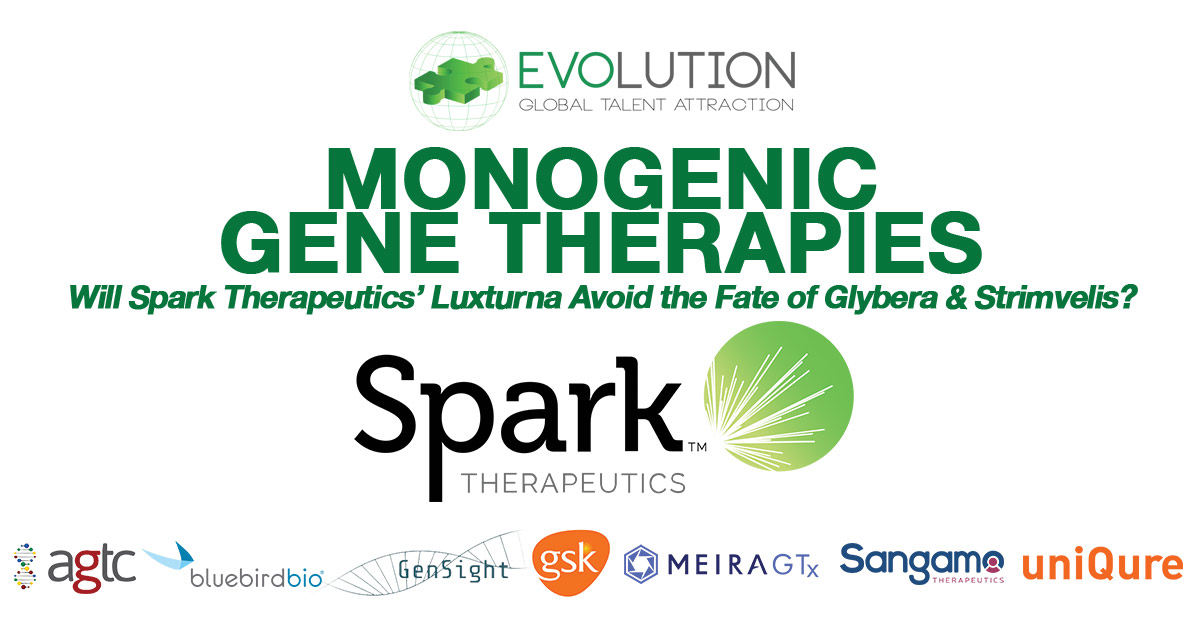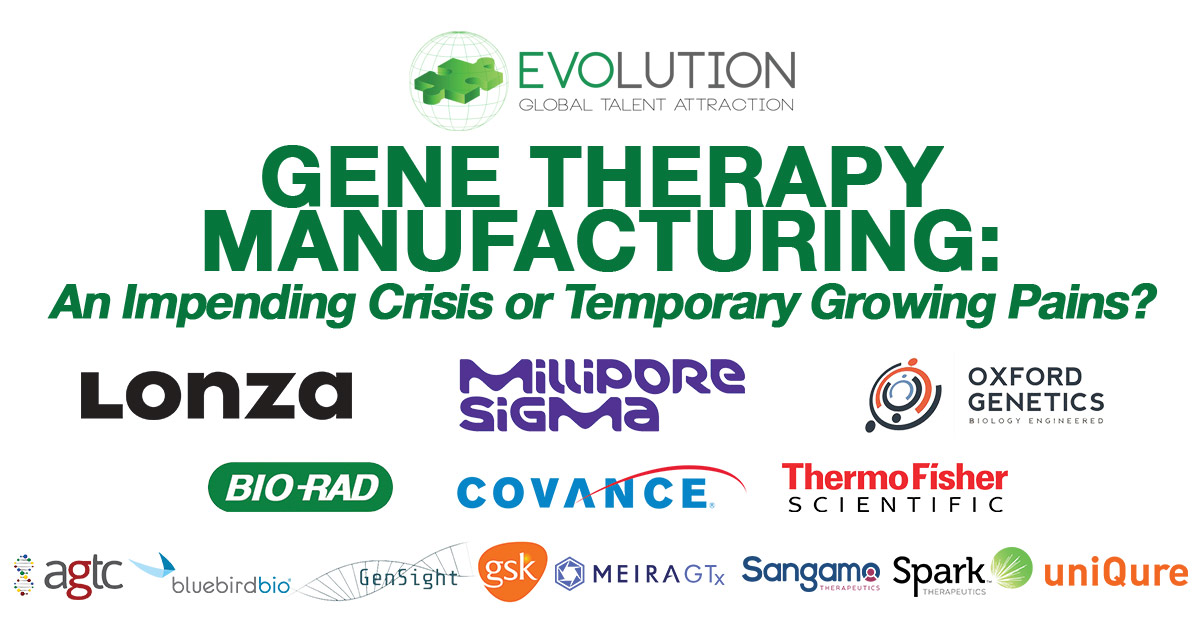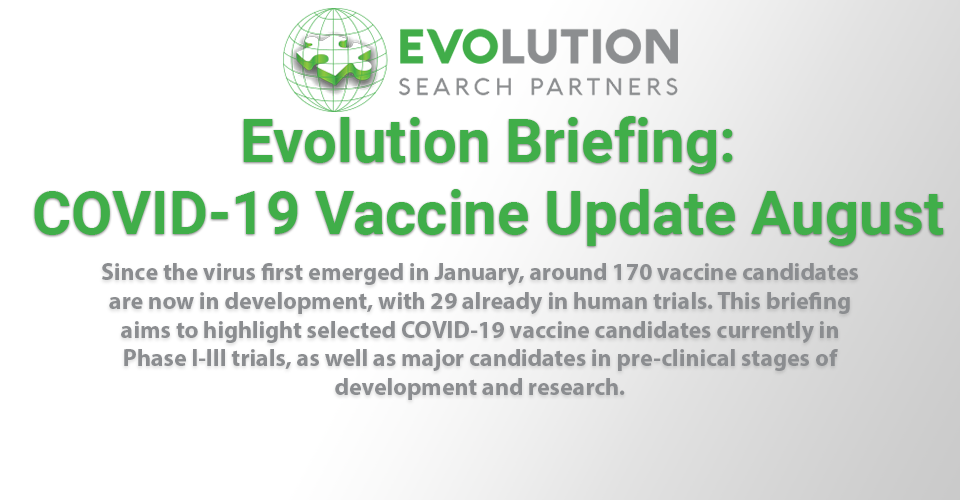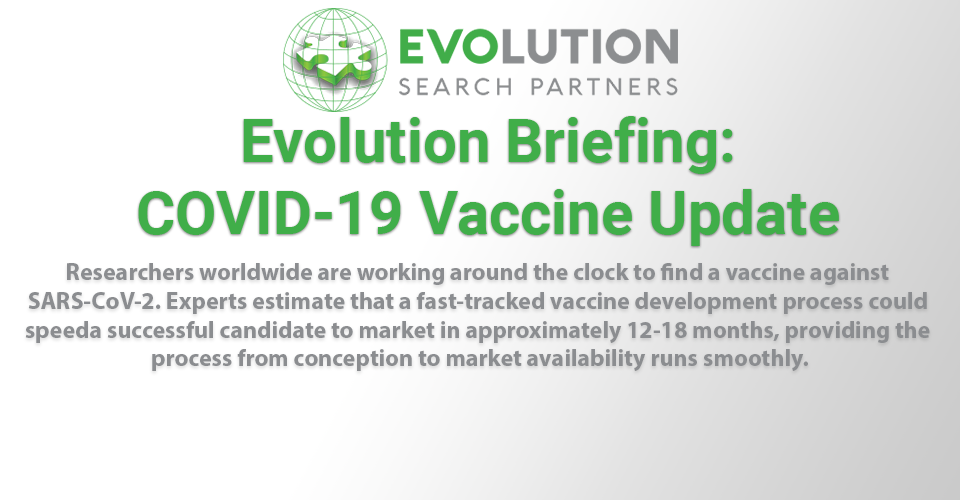
Monogenic Gene Therapies: Will Spark Therapeutics’ Luxturna Avoid the Fate of Glybera & Strimvelis?
October 24, 2017
Global Therapeutic IPO Review: $6.4B Raised as Bullish Investors Back Biologics & Gene Therapies Despite Slowed Growth in 2017
January 30, 2018[vc_row][vc_column][vc_column_text] The Food and Drug Administration recently announced the first ever approval of a directly administered gene therapy in the United States. Spark Therapeutics one-time gene therapy Luxturna is indicated for the treatment of vision loss caused by biallelic RPE65 mutation-associated retinal dystrophy, and is the first and only pharmacologic treatment for an inherited retinal disease. Given the strength of the pipeline, the approval of Luxturna has intensified competition amongst companies developing gene therapies, and the commercial success of the treatment could have serious implications for therapies still in development.
The Food and Drug Administration recently announced the first ever approval of a directly administered gene therapy in the United States. Spark Therapeutics one-time gene therapy Luxturna is indicated for the treatment of vision loss caused by biallelic RPE65 mutation-associated retinal dystrophy, and is the first and only pharmacologic treatment for an inherited retinal disease. Given the strength of the pipeline, the approval of Luxturna has intensified competition amongst companies developing gene therapies, and the commercial success of the treatment could have serious implications for therapies still in development.
Historically the pricing of approved gene therapies has presented major issues, ultimately leading to a lack of demand for both UniQure’s Glybera and GSK’s Strimvelis, both of which were approved in Europe and will now serve as a cautionary tale for Spark as they seek to commercialise Luxturna, which has been given a price tag of $425k per eye. In addition to the well-documented pricing issues associated with gene therapies, a recent manufacturing crisis has grabbed the attention of the biopharmaceutical community, prompting analysts to question whether this is the beginning of a successful journey or an emerging manufacturing disaster.[/vc_column_text][vc_column_text]
Supply & Demand
80% of gene therapy manufacturing is outsourced to bigger players, such as Lonza, Covance, Thermo Fisher & Merck. Demand for the gene therapy manufacturers has increased dramatically in recent years, and MilliporeSigma CEO Udit Batra has stated that they are “oversubscribed,” and that whilst they have already increased capacity, they are unable to keep up with demand. Many virus-manufacturing companies have signed lucrative long-term contracts and still have customers queuing up for their services. The demand is well justified considering that modified viruses are custom-made and require specialised facilities.[/vc_column_text][vc_column_text]
Data Visualisation: Gene Therapy Pipeline for Monogenic Diseases – Are We Reaching a Tipping Point?
FDA Clinical Trials analysis by Evolution Global highlights 60 ongoing industry-funded monogenic gene therapy trials as of 18 January 2018. Our Monogenic Gene Therapy treemap below outlines the key players involved, with GSK and Bluebird Bio leading the pack, each with 6 gene therapies currently undergoing clinical trials. Other significant players include Spark Therapeutics, GenSight Biologics, MeiraGTx, Sangamo Therapeutics and Applied Genetic Technologies.[/vc_column_text][vc_raw_html]JTNDZGl2JTIwY2xhc3MlM0QlMjd0YWJsZWF1UGxhY2Vob2xkZXIlMjclMjBpZCUzRCUyN3ZpejE1MTY3MjU4NTY2NjclMjclMjBzdHlsZSUzRCUyN3Bvc2l0aW9uJTNBJTIwcmVsYXRpdmUlMjclM0UlM0Nub3NjcmlwdCUzRSUzQ2ElMjBocmVmJTNEJTI3JTIzJTI3JTNFJTNDaW1nJTIwYWx0JTNEJTI3TW9ub2dlbmljJTIwR2VuZSUyMFRoZXJhcGllcyUzQU9uZ29pbmclMjBBY3RpdmUlMjBDbGluaWNhbCUyMFRyaWFscyUyMEFuYWx5c2lzJTIwYnklMjBFdm9sdXRpb24lMjBHbG9iYWwlMjAlMjclMjBzcmMlM0QlMjdodHRwcyUzQSUyNiUyMzQ3JTNCJTI2JTIzNDclM0JwdWJsaWMudGFibGVhdS5jb20lMjYlMjM0NyUzQnN0YXRpYyUyNiUyMzQ3JTNCaW1hZ2VzJTI2JTIzNDclM0JHZSUyNiUyMzQ3JTNCR2VuZVRoZXJhcHlEZXZlbG9wbWVudC1KYW51YXJ5MjAxOENsaW5pY2FsVHJpYWxzQW5hbHlzaXMlMjYlMjM0NyUzQk1vbm9nZW5pY0dlbmVUaGVyYXBpZXNPbmdvaW5nQWN0aXZlQ2xpbmljYWxUcmlhbHNBbmFseXNpc2J5RXZvbHV0aW9uR2xvYmFsJTI2JTIzNDclM0IxX3Jzcy5wbmclMjclMjBzdHlsZSUzRCUyN2JvcmRlciUzQSUyMG5vbmUlMjclMjAlMkYlM0UlM0MlMkZhJTNFJTNDJTJGbm9zY3JpcHQlM0UlM0NvYmplY3QlMjBjbGFzcyUzRCUyN3RhYmxlYXVWaXolMjclMjAlMjBzdHlsZSUzRCUyN2Rpc3BsYXklM0Fub25lJTNCJTI3JTNFJTNDcGFyYW0lMjBuYW1lJTNEJTI3aG9zdF91cmwlMjclMjB2YWx1ZSUzRCUyN2h0dHBzJTI1M0ElMjUyRiUyNTJGcHVibGljLnRhYmxlYXUuY29tJTI1MkYlMjclMjAlMkYlM0UlMjAlM0NwYXJhbSUyMG5hbWUlM0QlMjdlbWJlZF9jb2RlX3ZlcnNpb24lMjclMjB2YWx1ZSUzRCUyNzMlMjclMjAlMkYlM0UlMjAlM0NwYXJhbSUyMG5hbWUlM0QlMjdzaXRlX3Jvb3QlMjclMjB2YWx1ZSUzRCUyNyUyNyUyMCUyRiUzRSUzQ3BhcmFtJTIwbmFtZSUzRCUyN25hbWUlMjclMjB2YWx1ZSUzRCUyN0dlbmVUaGVyYXB5RGV2ZWxvcG1lbnQtSmFudWFyeTIwMThDbGluaWNhbFRyaWFsc0FuYWx5c2lzJTI2JTIzNDclM0JNb25vZ2VuaWNHZW5lVGhlcmFwaWVzT25nb2luZ0FjdGl2ZUNsaW5pY2FsVHJpYWxzQW5hbHlzaXNieUV2b2x1dGlvbkdsb2JhbCUyNyUyMCUyRiUzRSUzQ3BhcmFtJTIwbmFtZSUzRCUyN3RhYnMlMjclMjB2YWx1ZSUzRCUyN25vJTI3JTIwJTJGJTNFJTNDcGFyYW0lMjBuYW1lJTNEJTI3dG9vbGJhciUyNyUyMHZhbHVlJTNEJTI3eWVzJTI3JTIwJTJGJTNFJTNDcGFyYW0lMjBuYW1lJTNEJTI3c3RhdGljX2ltYWdlJTI3JTIwdmFsdWUlM0QlMjdodHRwcyUzQSUyNiUyMzQ3JTNCJTI2JTIzNDclM0JwdWJsaWMudGFibGVhdS5jb20lMjYlMjM0NyUzQnN0YXRpYyUyNiUyMzQ3JTNCaW1hZ2VzJTI2JTIzNDclM0JHZSUyNiUyMzQ3JTNCR2VuZVRoZXJhcHlEZXZlbG9wbWVudC1KYW51YXJ5MjAxOENsaW5pY2FsVHJpYWxzQW5hbHlzaXMlMjYlMjM0NyUzQk1vbm9nZW5pY0dlbmVUaGVyYXBpZXNPbmdvaW5nQWN0aXZlQ2xpbmljYWxUcmlhbHNBbmFseXNpc2J5RXZvbHV0aW9uR2xvYmFsJTI2JTIzNDclM0IxLnBuZyUyNyUyMCUyRiUzRSUyMCUzQ3BhcmFtJTIwbmFtZSUzRCUyN2FuaW1hdGVfdHJhbnNpdGlvbiUyNyUyMHZhbHVlJTNEJTI3eWVzJTI3JTIwJTJGJTNFJTNDcGFyYW0lMjBuYW1lJTNEJTI3ZGlzcGxheV9zdGF0aWNfaW1hZ2UlMjclMjB2YWx1ZSUzRCUyN3llcyUyNyUyMCUyRiUzRSUzQ3BhcmFtJTIwbmFtZSUzRCUyN2Rpc3BsYXlfc3Bpbm5lciUyNyUyMHZhbHVlJTNEJTI3eWVzJTI3JTIwJTJGJTNFJTNDcGFyYW0lMjBuYW1lJTNEJTI3ZGlzcGxheV9vdmVybGF5JTI3JTIwdmFsdWUlM0QlMjd5ZXMlMjclMjAlMkYlM0UlM0NwYXJhbSUyMG5hbWUlM0QlMjdkaXNwbGF5X2NvdW50JTI3JTIwdmFsdWUlM0QlMjd5ZXMlMjclMjAlMkYlM0UlM0NwYXJhbSUyMG5hbWUlM0QlMjdmaWx0ZXIlMjclMjB2YWx1ZSUzRCUyN3B1Ymxpc2glM0R5ZXMlMjclMjAlMkYlM0UlM0MlMkZvYmplY3QlM0UlM0MlMkZkaXYlM0UlMjAlMjAlMjAlMjAlMjAlMjAlMjAlMjAlMjAlMjAlMjAlMjAlMjAlMjAlMjAlMjAlM0NzY3JpcHQlMjB0eXBlJTNEJTI3dGV4dCUyRmphdmFzY3JpcHQlMjclM0UlMjAlMjAlMjAlMjAlMjAlMjAlMjAlMjAlMjAlMjAlMjAlMjAlMjAlMjAlMjAlMjAlMjAlMjAlMjAlMjB2YXIlMjBkaXZFbGVtZW50JTIwJTNEJTIwZG9jdW1lbnQuZ2V0RWxlbWVudEJ5SWQlMjglMjd2aXoxNTE2NzI1ODU2NjY3JTI3JTI5JTNCJTIwJTIwJTIwJTIwJTIwJTIwJTIwJTIwJTIwJTIwJTIwJTIwJTIwJTIwJTIwJTIwJTIwJTIwJTIwJTIwdmFyJTIwdml6RWxlbWVudCUyMCUzRCUyMGRpdkVsZW1lbnQuZ2V0RWxlbWVudHNCeVRhZ05hbWUlMjglMjdvYmplY3QlMjclMjklNUIwJTVEJTNCJTIwJTIwJTIwJTIwJTIwJTIwJTIwJTIwJTIwJTIwJTIwJTIwJTIwJTIwJTIwJTIwJTIwJTIwJTIwJTIwdml6RWxlbWVudC5zdHlsZS53aWR0aCUzRCUyNzEwMCUyNSUyNyUzQnZpekVsZW1lbnQuc3R5bGUuaGVpZ2h0JTNEJTI4ZGl2RWxlbWVudC5vZmZzZXRXaWR0aCUyQTAuNzUlMjklMkIlMjdweCUyNyUzQiUyMCUyMCUyMCUyMCUyMCUyMCUyMCUyMCUyMCUyMCUyMCUyMCUyMCUyMCUyMCUyMCUyMCUyMCUyMCUyMHZhciUyMHNjcmlwdEVsZW1lbnQlMjAlM0QlMjBkb2N1bWVudC5jcmVhdGVFbGVtZW50JTI4JTI3c2NyaXB0JTI3JTI5JTNCJTIwJTIwJTIwJTIwJTIwJTIwJTIwJTIwJTIwJTIwJTIwJTIwJTIwJTIwJTIwJTIwJTIwJTIwJTIwJTIwc2NyaXB0RWxlbWVudC5zcmMlMjAlM0QlMjAlMjdodHRwcyUzQSUyRiUyRnB1YmxpYy50YWJsZWF1LmNvbSUyRmphdmFzY3JpcHRzJTJGYXBpJTJGdml6X3YxLmpzJTI3JTNCJTIwJTIwJTIwJTIwJTIwJTIwJTIwJTIwJTIwJTIwJTIwJTIwJTIwJTIwJTIwJTIwJTIwJTIwJTIwJTIwdml6RWxlbWVudC5wYXJlbnROb2RlLmluc2VydEJlZm9yZSUyOHNjcmlwdEVsZW1lbnQlMkMlMjB2aXpFbGVtZW50JTI5JTNCJTIwJTIwJTIwJTIwJTIwJTIwJTIwJTIwJTIwJTIwJTIwJTIwJTIwJTIwJTIwJTIwJTNDJTJGc2NyaXB0JTNF[/vc_raw_html][vc_empty_space height=”20px”][vc_column_text]
Adapting to Gene Therapy Manufacturing Demands
At the end of 2017, Lonza announced a pair of strategically significant agreements and collaborations to better position the company in the gene and cell therapy market. Firstly, Lonza and Massachusetts Eye and Ear (MEE) signed a licensing agreement with Akouos for exclusive rights to the ancestral adeno-associated viral vectors gene therapy platform for all hearing and balance disorders. Secondly, Lonza widened its portfolio by acquiring the autologous cell and gene contract manufacturer PharmaCell, who has been the manufacturer of the only two European-approved cell therapy products.
British CMO Oxford Genetics, who recently partnered with MeiraGTx on new AAV vectors, have also identified the opportunity presented by the burgeoning gene and cell therapy manufacturing market and have adapted quickly by shifting company expenditure to USA.
Although the industry has seen significant improvements in the efficient production of gene therapies, major issues remain. Both autologous and allogenic therapies are facing a sterility challenge, as it is difficult to avoid microorganism contamination during open-system manufacturing processes. The process of cell modification requires multiple steps: amplification, filtration, purification and cryopreservation, which involves continuous manual feeding and medium changing that increases the risk of contamination. When working with unstable live vectors, high precision is required to maintain potency and ensure a successful product outcome.
Bluebird Bio, working on sickle cell gene therapies, was forced to re-evaluate its protocol and manufacturing processes due to reproducibility issues. The level of corrected cells in Bluebird’s adjusted gene therapy was approximately 30% higher than initial levels, but crucially these manufacturing issues significantly delayed the development and potential approval the therapy. Whilst these issues did not halt the development of Bluebird’s therapeutic candidate, there are several gene therapies that have failed due to similar issues, such as Ziopharm Oncology’s Glioblastoma candidate and NewLink Genetics algenpantucel-L gene therapy for resected pancreatic cancer.
The only way to overcome both contamination and inaccuracy is the introduction of completely closed and fully-automated sterile systems. Whilst several companies are developing next-generation reactors and tackling issues of contamination, there is still significant space for improvement. Bio-Rad laboratories are leading the diagnostic tools, gene transfer, QC systems & instrumentation production for the gene therapy market, mainly focusing on autologous cell therapies. In June 2017, Bio- Rad introduced ddPCR™ Genome Edit Detection Assays – the first tests to characterize edits generated by CRISPR-Cas9 or other genome editing tools using Bio-Rad’s Droplet Digital PCR (ddPCR) technology. The technology gives companies developing gene therapies a method to predict and analyse the outcome of genome editing, enabling researchers to save both time and money.[/vc_column_text][vc_column_text]
Conclusions
The approval of Luxturna represents a significant milestone for gene therapies and has been hailed as a watershed moment for the industry, however it arrives in the midst of ongoing manufacturing and commercialisation issues that must be overcome in order for potential to be fulfilled. Competition for manufacturing resources is likely to further increase the costs of gene therapy production, amplifying the problems that plagues European approvals. In the coming years, both major and minor biopharmaceutical players will need to continue to adapt and evolve to ever-shifting market demands in order to full realise the potential of gene therapies.[/vc_column_text][vc_empty_space height=”10px”][vc_column_text]Follow Evolution Global on LinkedIN, Twitter & Facebook to keep up-to-date with news and trends from the biotechnology, biopharmaceutical, medical device and related industries.[/vc_column_text][/vc_column][/vc_row]



